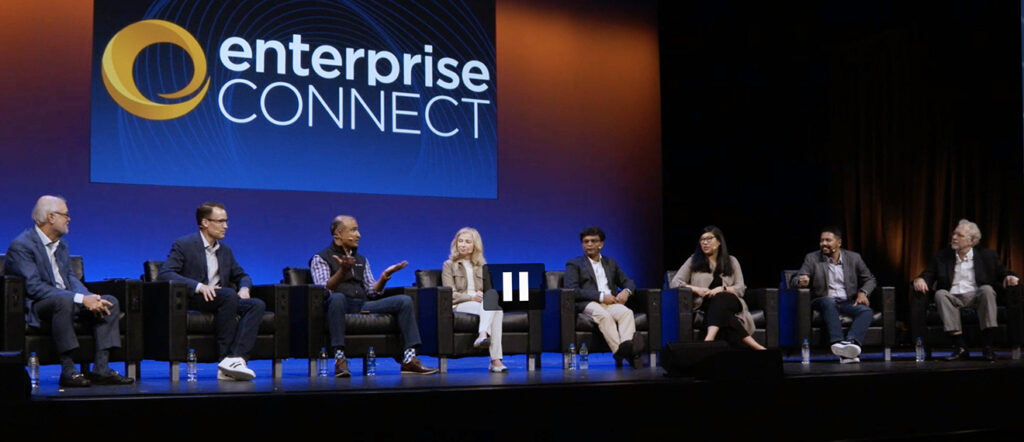Collaboration tools, diverse user experiences and smart meeting room technologies are front and center for IT leaders looking to support their organizations’ hybrid work strategies. “Even though our people will be coming back, they won’t be operating the same way,” said Ann Dozier, SVP, CIO, Southern Glazer’s Wine and Spirits. “We know that our sales people, delivery drivers and office workers have very different communication needs, but we need to tie them together and connect the dots for a personalized user experience.”
Dozier was a panelist at an Enterprise Connect 2022 session, “Building the New World of Enterprise Collaboration,” with David Bartos, senior manager of telecommunications, Ryder System; Gary LaSasso, senior director, global IT, Amicus Therapeutics; and Todd White, IT manager of collaboration services, Ford Motor Company.
“You are the people who kept the world working the past two years,” said moderator Eric Krapf, general manager, addressing the audience at Enterprise Connect. “Now, we are excited to learn about what’s next.”
Asked about their current priorities, White said Ford is accelerating its production of electric vehicles. “Our company is hiring talented people, and we want to provide the technology and tools they need to collaborate at home or on site, anywhere in the world,” he said. “We work hand-in-hand with our business partners to get them the devices and software they need, minimizing the lag to get new people productive.”
After two years of working remotely, Ryder is now evaluating what to do with its physical locations, said Bartos. “We have expensive real estate, so do we bring people back or look at other ways to do hybrid work?”
Meeting room strategies
Faced with the challenges of supporting a hybrid workforce, IT leaders are assessing current meeting room infrastructures and adapting new tools aimed at providing a consistent experience for participants regardless of location. “Our challenge is to make the solution simple, secure and standard for everyone,” said Dozier. “Fortunately, virtual assistants and cloud technology have made it easier to use our meetings and conference rooms.”
Traditional AV technology is no longer enough at Ford, according to White. Instead, AI applications and digital assistants help in many ways, such as providing real-time transcriptions, as well as pre- and post-meeting services. “We hold 60,000 meetings a day, so whiteboarding is an important along with asynchronous video, which allows our people to record updates for collaborators in other locations,” White said. “We are also drilling down to connect with our supply chains and dealerships. For instance, service techs can put on video-supported goggles so our engineers can see what they see.”
Amicus Therapeutics is building an innovation center for scientific research in the laboratory, LaSasso said. “It will be a beautiful space with glass walls that meets the needs of different generations in the workplace, from executives who want to be in the office all the time to younger professionals who come in and out. Our goal is to simplify the technology so anyone can walk into a room and automatically launch a meeting.”
Now, LaSasso is looking at how to take user experiences to the next level, such as providing captioning and translation services so people with hearing disabilities can see the words. “We have a colleague with multiple sclerosis who was always on mute because he didn’t want the ventilator noise to disturb online meetings. We were able to provide a filter that made his experience so much better. It really changed his life. That’s a great example of the power of these new smart tools. ”

